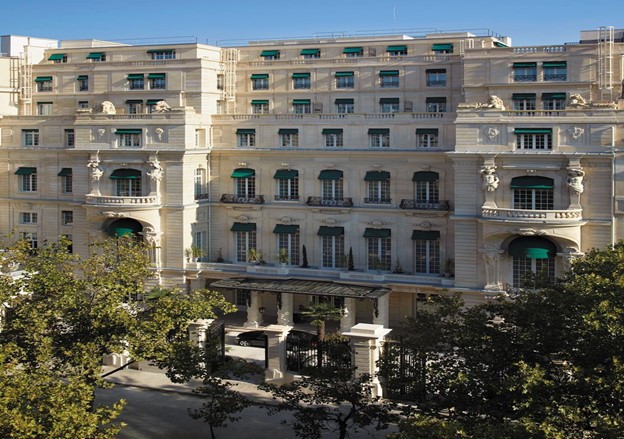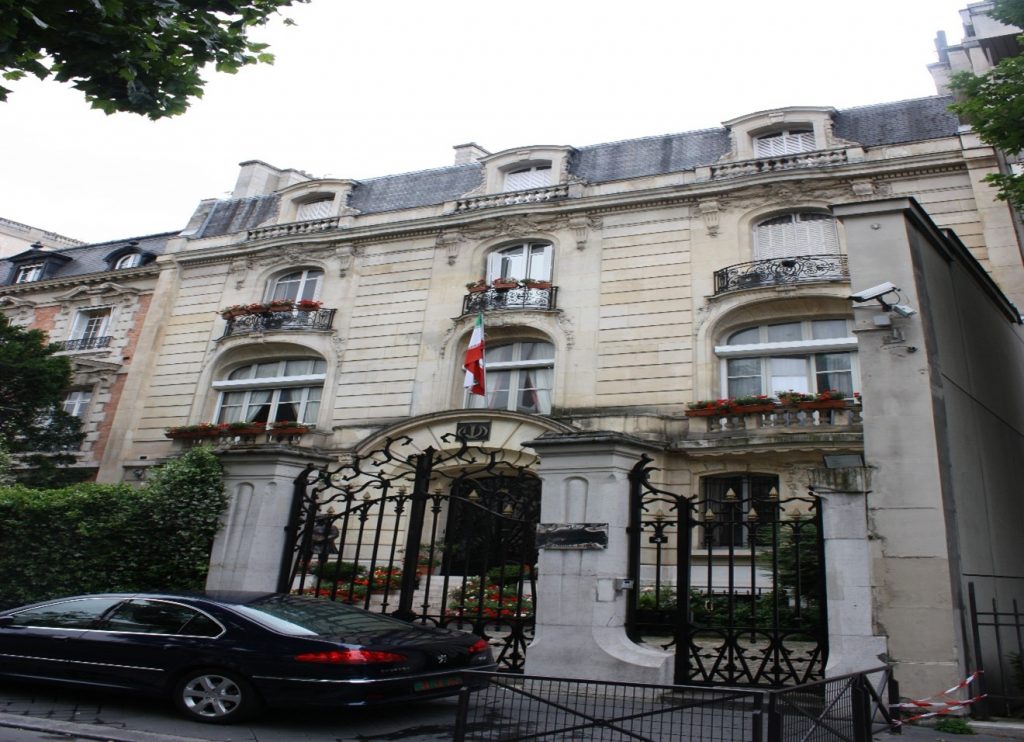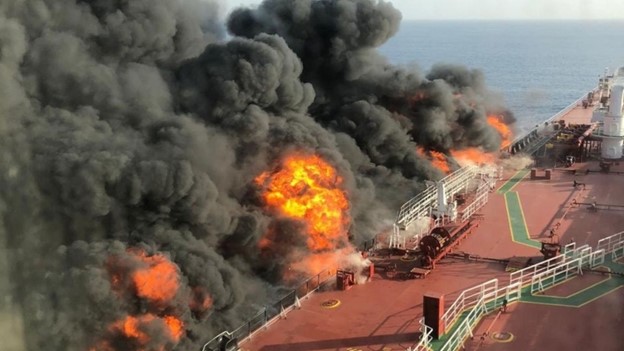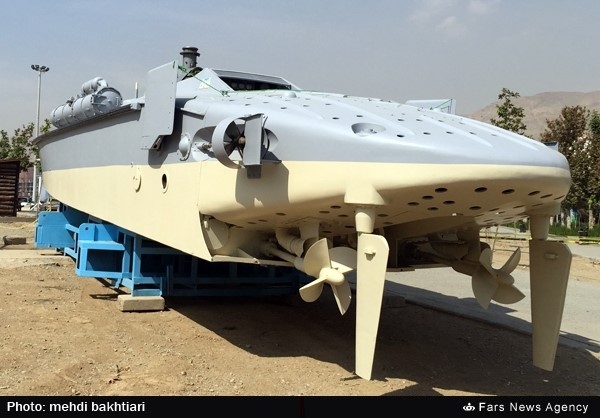

Date: 10/26/2020
Author: Kent Moors, Ph.D.
I arrived back in the US about five hours ago. And the aftermath of my week of meetings increases my broad based concerns about the stability in the Persian Gulf.
My disquiet is building, like that feeling I have back home in Florida when overlooking a tranquil ocean just before strong winds appear on the horizon.
Prior to our arrival in Switzerland a week-ago, the plan had been to have a final capstone session in Paris on the way back. This was to serve as an opportunity to assess what had been gained from the sessions in Lausanne, Abu Dhabi, and Doha, as well as to bring into the conversation some other parties.
However, all involved concluded that a Paris meeting was unwarranted. First, the city is under siege from the worst COVID-19 outbreak yet to hit the French capital. The lockdown there was intensifying. Why visit the “City of Light” if all my favorite restaurants were closed to begin with?
Second, what we needed to accomplish in any post-negotiation discussion could as easily be accomplished via Zoom or Google Meet.
I had still held out a slight chance that a follow-up meeting with both European and Iranian experts might have been useful. This one I would have preferred to have with a coterie of my contacts at the United Nation’s International Energy Agency (IEA) Paris headquarters and a select group of Iranians. These Iranians have connections to international financial circles and bases of operations in the city.
As it turns out, even if the coronavirus situation in Paris was not as dire, additional talks were to no avail. It meant my favorite way of operating there would not be of any advantage.
As with such situations during prior talks, my base would have been the Shangri-La Hotel, close by the Eiffel Tower in the city’s fashionable 16th arrondissement.


Overlooking both the Tower and the River Seine, the hotel is a painstaking restoration of the elegant nineteenth century residence of Prince Roland Bonaparte (Napoleon’s nephew). It is also well-positioned for another reason.
Located at 8-10, Avenue d’Iéna, it just happens to be next door to the Iranian Embassy (4-6, Avenue d’Iéna).


However, neither additional sessions with Iranian representatives nor Continental energy experts were necessary after our meetings on Saturday in Doha.
Those lasted about three hours, and while cordial, never preceded much beyond an initial Iranian condemnation of US moves – exiting from JCPOA (the international nuclear agreement), resuming economic sanctions against Iran, and the January killing of Iranian General Qasem Soleimani. Everybody is now delaying any further moves until the US election takes place.
The folks I knew on the Iranian side during both the Lausanne and Doha talks looked tired. But then so were we.
On the other hand, I also saw firm resolve from the Iranians this time around. That and a quiet determination to make the US pay for pulling out of JCPOA. They are playing a long game here, to the extent that their fragile domestic economy allows.
Nobody from my side of the table in Doha expected there would be any concessions coming, or for that matter any genuine “breakthrough.” Our approach from the outset was to start a process and then determine if it could be advanced at a later stage.
Marrying security concerns with financial ones is never an easy task.
There was some indication that Teheran might soften its stance from a hardline position against other Persian Gulf littoral states. Yet, there is no chance of that taking place without a signal from Washington that economic sanctions might be relaxed. And that depends on the next US administration.
At one point, the request was clearly put forward: what would Teheran require to lessen the regional tension and reduce shipping concerns? There was never a formal response.
Nonetheless, what remains is the same flashpoint with which we began the talks – The Strait of Hormuz. It is the focus of both Iranian threats and broader regional concerns. As such, it was a main component of all our deliberations last week in Switzerland (Lausanne), the United Arab Emirates (UAE, Abu Dhabi), and Qatar (Doha).
The whole situation changes again abruptly (and for the worse) if throughput access at the Strait of Hormuz is threatened. This is the passage connecting the Persian Gulf to the north with the Gulf of Oman and Arabian Sea to the south.
As I have said before here in Classified Intelligence Brief, the Strait remains a narrow choke point. At its narrowest, half is in Iranian waters and thereby out of bounds for tankers. Much less of the remaining width is navigable.
Our previous discussions in CIB have noted that Iran has the capability to interdict sea traffic at the Strait, but probably could not stop traffic altogether. Nonetheless, any introduction of uncertainty caused by the possible interruption of crude oil transfers will spike volatility and raise global oil prices dramatically.
The fluidity about this crisis was emphasized in a recent statement from Iranian President Hassan Rouhani declaring that Iran considered closure of the Strait a policy option. Prior to this year, Rouhani had been regarded in the West as a reformer and moderate. But the death of Soleimani and the domestic market collapse occasioned by the resumption of American sanctions have eliminated his leverage against the more militant among the clergy, military, and anti-American leadership.
Rouhani’s statement was followed by one from Hashmatullah Flahat Bisha, the chair of the Iranian Majlis (Parliament) Committee for National Security and Foreign Policy. Bisha said that Iran could not close the Strait. But it is uncertain whether he was referring to Iran’s military ability to keep Hormuz closed or the advisability of doing so at all.
To put matters in stark relief, about 17 million barrels, or some 22 percent of all the world’s daily oil transit takes place via Hormuz. If we consider only oil moved by tanker (that is, subtracting what is moved by pipeline), it increases to almost 36 percent of global oil trade.
In the ongoing competition in the Persian Gulf, Saudi Arabia, Bahrain, the UAE, Qatar, Iraq, and Kuwait oil and liquefied natural gas (LNG) exports would be directly affected by any attempt to prevent transport via Hormuz.
Iran would affect its own exports as well since the bulk of that volume ships from terminals on Kharq Island in the northern Persian Gulf, although Teheran is about to operationalize some port facilities south of the Strait.
The image still in everybody’s mind is last year’s June attacks on oil tankers just south of Hormuz. Unlike the initial attacks a month earlier, these were consequential in rapidly increasing the threat potential, market uncertainties, and the price of oil.
The earlier attack on May 13, 2019 targeted four ships in waters off the main UAE bunkering port of Fujairah just southwest of the Strait of Hormuz (a location I visited a few months later). All those tankers were empty and there were no injuries.
Those events were followed one day later by a drone attack on portions of the large Saudi East-West Pipeline transporting crude oil west from the country’s primary fields in the Eastern Province to embarkation terminal facilities on the Red Sea near Jeddah. Once again, no causalities.
Exactly one month later, on June 13, two tankers attacked were carrying volume (oil products), the damage was extensive, crews on both had to be evacuated, and there were injuries.


June 13, 2019: view from the bridge of the Front Altair, one of two tankers hit in the Gulf of Oman Source: IRIB (Islamic Republic of Iran Broadcasting); IRIB obtained the photo from a regional press pool
According to my sources in the region, both the US Navy and the Iranian Revolutionary Guard Corps (IRGC), whose navy (IRGCN) controls Iranian waters in the Persian Gulf region, scrambled forces deployed in the area following the attacks.
At the center of US charges was the conclusion that IRGCN high speed attack vessels orchestrated both the May 13 and June 13 attacks. Washington has said it would provide conclusive evidence for both attacks. Over a year later, it has yet to do so. The US Navy said that an examination of debris following the June attack could ascertain origin, but that report has not been released publicly.
According to sources within the US military planning apparatus, the focus of attention is Iranian Zolfaqar semi-submersible, high-speed torpedo boats. We talked about these last week in CIB. One is pictured below from a photo released by the official Iranian Fars News Agency in October of 2015. Note the torpedo tube starboard midship. Another is located on the port side.


Tehran has flatly denied the charge that it attacked the tankers on either occasion. My Iranian sources have pointed out (repeatedly) that the June attack made no sense, given that Rouhani was hosting Japanese Prime Minister Sinzo Abe at the time in Teheran. Both tankers hit in the June attacks were on route to Asia (Singapore and Taiwan, respectively).
At the time, Iranian Foreign Minister Javad Zarif angrily denied (again) that his country had any involvement in either the May 13 or June 13 attacks. He categorically condemned US Secretary of State Mike Pompeo’s statements linking Teheran with the events. Zarif said the US had not “a shred of factual or circumstantial evidence,” further labeling Pompeo’s approach “sabotage diplomacy.”
It is perhaps a sign of the times that this exchange between the US and Iranian foreign policy officials took place on Twitter.
Sources in my Persian Gulf regional network also pointed out that there were no indications of any unusual IRGCN deployments in advance of the June attack.
On the other hand, these same sources acknowledge the attack did bear the markings of a torpedo launch from a boat, rather than vessels incurring damage from a deployed mine in the water, or surface-to-surface or ship-to-ship missiles.
There are also other unusual aspects of the events. Once again, information immediately dispatched from a government-controlled media source in the UAE turned out to be inaccurate. With the June 13 events, the media source reported that one of the vessels hit had been sunk. That turned out to be untrue.
While the May 13 episode was still unfolding, the same media source reported that an attack was underway onshore at the Fujairah port facilities. That also turned out to be untrue.
Both, of course, served to escalate tension.
Meanwhile, my sources both in Iran and Iraq were then concerned that, as in the May episodes, the June 2019 attacks would be paralleled by another strike in the region, perhaps onshore.
That came in September (as I noted in CIB earlier this month) against the Saudi Khurais oil field and the giant Abqaiq processing center.
While the IRGCN has been conducting exercises to signal it can impede flow through the Strait, direct confrontation with the (now two carrier task force strong) US fleet is unlikely. Lower level strikes to create market angst, on the other hand, are always a possibility.
As one of my Iranian contacts wryly put it, “There are hardly enough US warships in the Persian Gulf to provide private escort services for each ship plying there.” That’s an all too clear reference to the number of individual targets available, and shows recognition any attack would create massive instability in the market that would be difficult to counter.
Further, as an Iraqi colleague added recently, “Aside from the logistical complexity, should the US counter with some sort of flagged convoy arrangement, Iran will consider it an act of aggression and could move against the Strait [of Hormuz].” This has been a main factor in Washington’s failure to secure any significant support for the convoy idea from other Persian Gulf states.
Welcome to the new normal in the Persian Gulf.


Dr. Kent Moors
This is an installment of Classified Intelligence Brief, your guide to what’s really happening behind the headlines… and how to profit from it.
Dr. Kent Moors served the United States for 30 years as one of the most highly decorated intelligence operatives alive today (including THREE Presidential commendations). After moving through the inner circles of royalty, oligarchs, billionaires, and the uber-rich, he discovered some of the most important secrets regarding finance, geo-politics, and business. As a result, he built one of the most impressive rolodexes in the world. His insights and network of contacts took him from a Vietnam veteran to becoming one of the globe’s most sought after consultants, with clients including six of the largest energy companies and the United States government.
Now, Dr. Moors is sharing his proprietary research every week… knowledge filtered through his decades as an internationally recognized professor and scholar, intelligence operative, business consultant, investor, and geo-political “troubleshooter.”
This publication is designed to give you an insider’s view of what is really happening on the geo-political stage. You can sign up for FREE to Classified Intelligence Brief and begin receiving insights from Dr. Moors and his team immediately.
Just click here – https://classifiedintelligencebrief.com/






